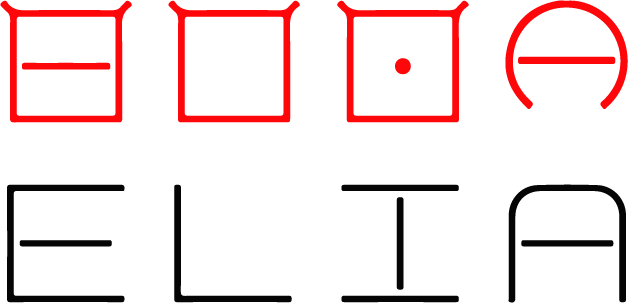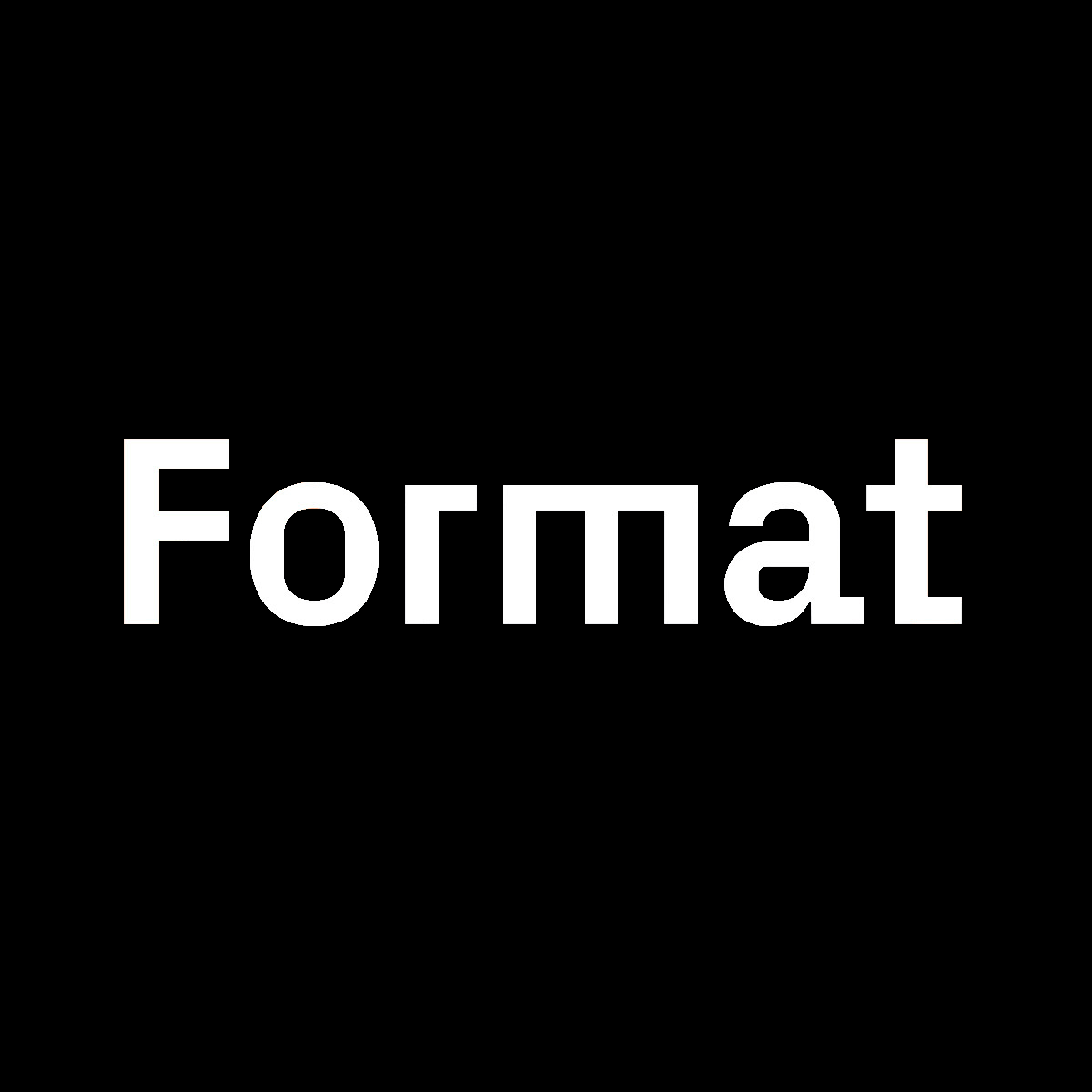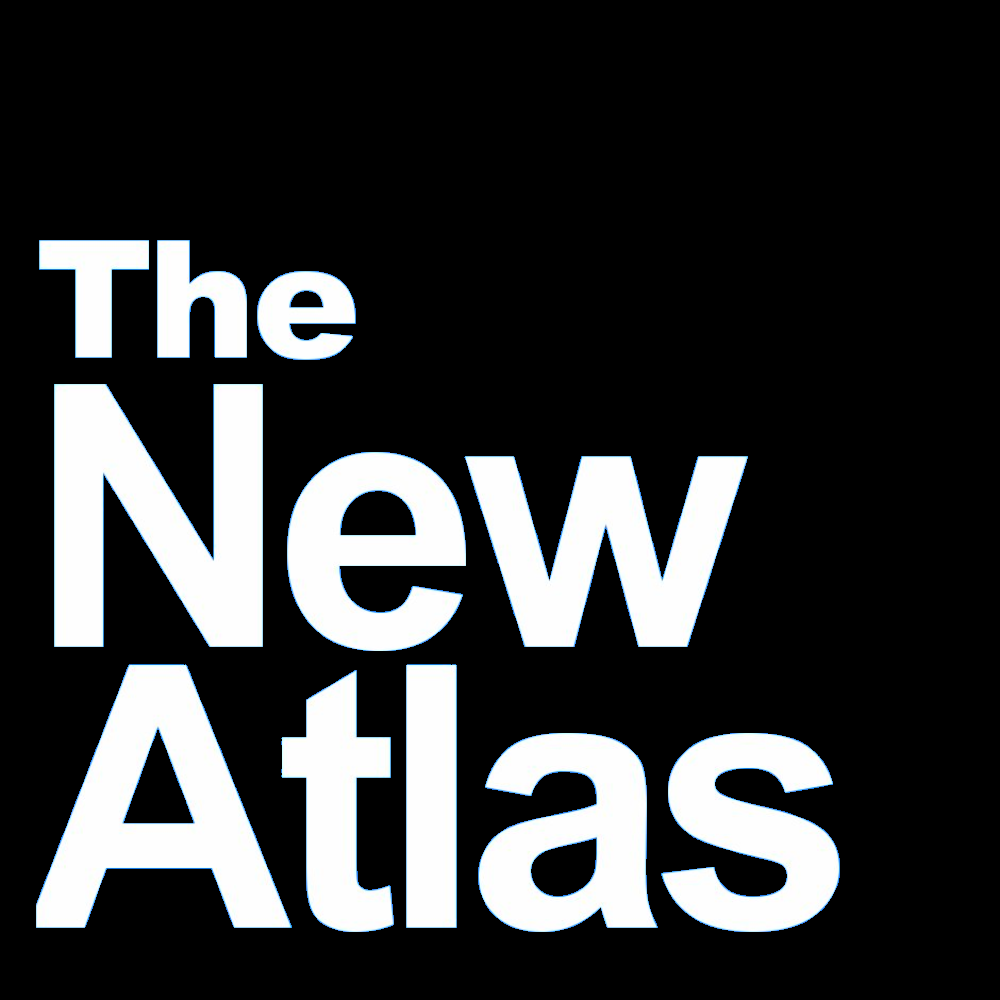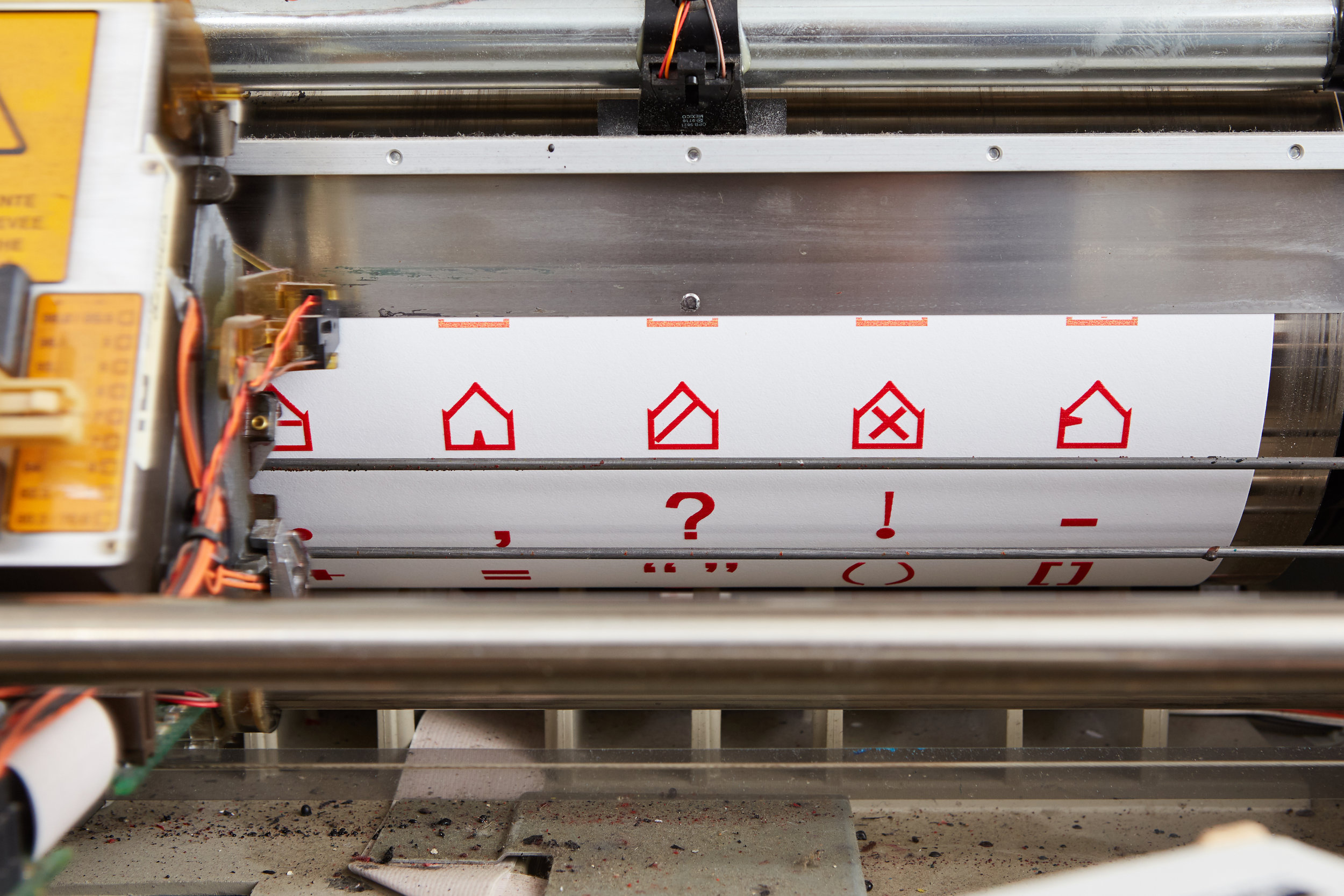Coverage
Image Assets
Press Kit
Introduction
Vision loss turns people’s worlds upside down. It robs them of their literacy and independence. It limits their ability to pursue employment, education, and happiness. It can isolate them from family, classmates, co-workers, and friends. ELIA Life Technology is working towards turning their lives right side up again.
We have created an intuitive alternative to braille. It is the foundation for an ecosystem of products that will enable people to regain literacy and. Our innovations leverage digital technology and the skills, behaviors, and abilities of people who have a visual impairment.
ELIA Frames
When (ELIA CEO) Andrew Chepaitis’s grandmother lost her vision and couldn’t learn braille, his family recognized that, with modern printing technology, a more efficient tactile-alphabet font design was possible. In his quest to help his grandmother regain her literacy, he discovered that most people who have a visual impairment cannot read braille. Andrew quit his job as a financial analyst, assembled a team, and got to work. Over the next several years, ELIA Life Technology, PBC (ELT) designed and tested hundreds of tactile letter designs. We analyzed and compared over 175,000 responses from test study participants. And the ELIA team compared our new raised print design - ELIA Frames - to braille. ELIA Frames reading speeds were more than 10 times as fast as standard braille.
The ELIA Frames™ font is designed to be the standard (i.e. Roman) alphabet revised and refined to be as tactilely legible as possible. It incorporates elements of the standard alphabet, with which previously sighted readers are already familiar, and places those defining letter elements within frames that provide clear character boundaries at any scale. The frame shapes (a circle or a square) also denote where that letter is in the alphabet, for easier memorization and recall. The familiar elements make the font easy for people to learn, and the frames provide a point of reference to enable readers to read the letters quickly and accurately across font sizes, just as one could with other fonts (e.g. Helvetica, Arial, etc.), all of which are legible at multiple font sizes.
The design has scaling flexibility so that people of different physical abilities can read it, because people’s tactile acuity declines with age. ELIA readers can choose different font sizes as their ability changes or a task requires (e.g. labeling spices vs. extended text reading). This is different from braille, which only comes in one font size. People often struggle to learn braille, or fail to learn it, because it requires tactile acuity that is beyond their body’s ability. They cannot discern the size of the space between the dots of braille letters.
Evolution
ELIA Frames has been refined in two ways since it was originally designed. The square frames have been altered slightly so that readers can more easily tell whether a frame is a square or a circle. While distinguishing between the two frame shapes is not difficult at large sizes, the distinction between the frames becomes more difficult as the letters are reduced in size – the ears on the square letters solve this challenge. The other change in the font was that the letters’ interiors were simplified and made more easily distinguishable from one another. For example, the inside the “A” originally had three lines (an equilateral triangle inside). The changes to the interiors and exteriors improved accuracy with which the letters is read by nearly 50%.
The Problem We Are Addressing
There are 8.4 million people who have a visual impairment in the US, most of whom were previously sighted. Less than 1% (59,000) can read braille. The other 99% cannot read braille because braille does not build upon their existing knowledge of the standard alphabet, and it is beyond their physical ability. In short, it is inaccessible. The lack of a tactile font has profound implications on education, employment, literacy and independence.
In response to this systemic problem of tactile illiteracy (the ability to read but being unable to do so), ELT slightly modified the Roman alphabet to enable anyone to read through touch. This new alphabet is ELIA Frames. It can be learned in minutes, and shared with family members, classmates, coworkers, and friends.
ELIA’s Goal
Our goal, in the creation of new technology and the ELIA Frames tactile font, is to positively impact the lives of those 8.4 million people who have a visual impairment, by enabling them to maintain their literacy - and therefore live the full life that literacy affords. Full education, employment, and independence are by-products of literacy. We are neutral as to whether people use ELIA Frames, braille, or another resource to achieve literacy. And we are even hopeful that our research will enable braille users to read braille faster and with greater utility.
Visual impairment takes a huge toll on society. With ELIA Frames, people who have a visual impairment will have a new tool with which to gain or retain employment. They will require less care from paid and unpaid caregivers. They will be able to maintain their independence and health. Additionally, they will be able to achieve greater academic and employment success. ELIA Frames readers will be able to better function within society because sighted co-workers, family members, and friends will be able to easily read and understand ELIA Frames materials.
The goal in developing our new font and technology is to reduce barriers and improve accessibility by leapfrogging over existing solutions, to a new modern standard that is comparable to those of the sighted - easy, fast, ubiquitous and affordable.
World’s First - The ELIA TouchPrinter
On-demand tactile print and graphics are unavailable to most of the blind. Those who are blind or have a visual impairment (B/VI) have healthcare costs that are over $11,000 higher annually, lower employment rates, and higher education costs. These disadvantages are due in part to their lack of access to tactile print and graphics. Almost all current tactile printers are dot embossing braille printers. And of the 8.4 million B/VI Americans, only 59,000 can read braille. Thus the output of available tactile printers is not valuable to most B/VI people. Where it is available, tactile printing is an expensive, cumbersome and unreliable process that requires a user to improvise a solution using independent systems.
ELT has created the world’s first tactile graphical printer. Now, any document or image that can be printed with a laser printer can be printed in tactile form. For the first time, the blind will have access to the same printed graphical information that the sighted have. With it, B/VI people will finally be enabled to compete in fields where graphics are an essential tool, such as science, technology, engineering, art, and mathematical (STEAM) jobs.
Our R&D team integrated Hewlett Packard printing components, and custom hardware and software to ensure that the printer prints consistent output that meets the US Library of Congress standard for tactile print production. Because the printer leverages mainstream printer technology (ELIA Life Technology has an exclusive license from Hewlett Packard to use their printing technology), any content that one can print with a laser printer can now be printed tactilely.
Design Process
Ninety percent of braille readers are employed. Among those who do not read braille, 60% are unemployed. Only 40% of high school students who have a visual impairment graduate from high school. Few braille readers drop out of high school. What can we do for the 99% of people who lose their vision later in life, can’t read braille and do not have a viable means by which to read newspapers, work-related materials, magazines, bills, books, and labels on canned goods and pharmaceuticals?
Company Background
To date, ELT has been funded through grants and angel investment. Our mission is to enable our readers to gain full educations, employment, literacy, independence, and a higher quality of life. We will reach our goals through partnerships with organizations (e.g. Lighthouse Guild) and through the sale of critical assistive products (our own and others’).
Our talents include experimental design/execution, product design/engineering and curriculum development. We write grants, serve as grant and competition reviewers and actively participate in incubators and entrepreneurial programs – either as residents or mentors. We are currently in residence at the NEW INC incubator for design and museum experiences.
Braille
Many braille users credit braille as one of the main reasons they are able to achieve high levels of independence, employment, continued literacy, and psychological well-being. Indeed, braille has “liberated a whole class of people from a condition of illiteracy and dependence. Braille makes it possible for a blind person to assume a role of equality in modern society, and it can unlock the potential within him or her to become a contributing member of society.” [Schroeder 1990, NFB Braille Monitor]
Ninety percent of braille readers are employed. Among those who do not read braille, 60% are unemployed. Only 40% of high school students who have a visual impairment graduate from high school. Few braille readers drop out of high school. What can we do for the 99% of people who lose their vision later in life, can’t read braille and do not have a viable means by which to read newspapers, work-related materials, magazines, bills, books, and labels on canned goods and pharmaceuticals?
A Growing B/VI Community
The B/VI population is expected to double by 2030 due to the growth of the over-45 population, their higher rates of visual impairment, and the increasing prevalence of diabetes within this demographic.
The Effect of a Growing Tactile Reader Community
As ELIA Frames adoption increases the total number of tactile readers, more aids and materials will be available for both braille and ELIA Frames readers. Additionally, new competition for tactile reading customers will improve the quality of the products and the responsiveness of the present companies in the field. All of our printers and tactile displays are being designed to support braille, so our work will also increase access to braille materials, as well as graphical information that they currently cannot access.
Braille readers have a higher chance of maintaining employment. The ELIA Frames can be learned faster than braille.
Audio
Text-to-speech technology and audio books are essential tools for people who have a visual impairment. However, many activities cannot be accomplished by using such technology. Audio technology does not provide a means to achieve or maintain literacy, leaving people without the tools needed for education and employment. It is also not suited to tasks that require hard copy – such as notes for presentations, and independent living tasks like meal preparation, taking medication, or identifying clothing. For these, braille readers prefer braille notes and labels. A tactile font increase independence for people who lose vision.
Impact on Healthcare
While the elderly B/VI population is increasing, the pool of available caregivers is decreasing. People who are B/VI and who require assistance often rely on unpaid caregivers, typically a family member, spouse, or friend. There are approximately 3.8 million people in the US who are B/VI and have difficult with essential daily activities, 3.1 million of whom require assistance with those activities. The B/VI person wants to remain independent. And the toll on the caregiver is enormous, resulting in lower employment rates and wages, higher incidence of family conflict, and higher mortality rates. Caregivers’ risk of experiencing depression is 30 times greater than that of non-caregivers.
According to the National Alliance for Caregiving and AARP, caregivers spend an average of 20-40 hours per week providing care and 69% of caregivers report having to rearrange their work schedule, decrease their hours, and/or take an unpaid leave. They often suffer loss of wages, health insurance and other job benefits, retirement saving or investing, and Social Security benefits.
Our goal is to enable caregivers to provide better care with fewer resources while their B/VI family members enjoy the higher quality of life that greater independence brings. ELIA Frames can be used for independent reading, as well as labeling and organization around the home. The touch printer and tactile display can produce tactile texts, graphics, and labels, and access to online information.
Commercial
The community of people who are blind or have a visual impairment is underserved by the assistive technology industry. As a comparison, there are 8.4 million people in the U.S. who have a visual impairment, and 8.3 million people who have a hearing impairment. The market for hearing aids is $4 billion, while the worldwide market for assistive products of the visually impaired is $62 million. As such, we believe that this is an underserved community and that it would benefit from additional innovation.
Hearing aids are a perfect example of the application of best practices from the field of design. A hearing aid is adjustable to a person’s physical needs, it can even be customized to the needs of a person in a specific environment. Braille was not designed for that sort of flexibility, because it was designed around the technological capabilities of 1824. ELIA can be changed to the needs of the reader.





















